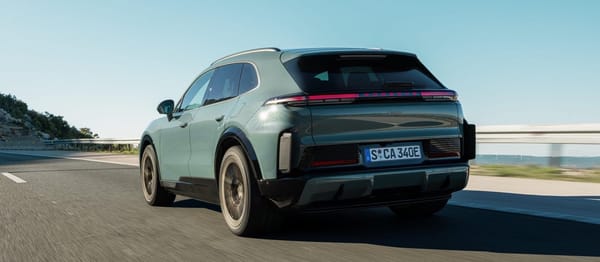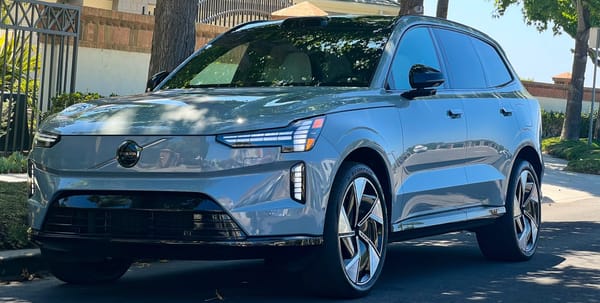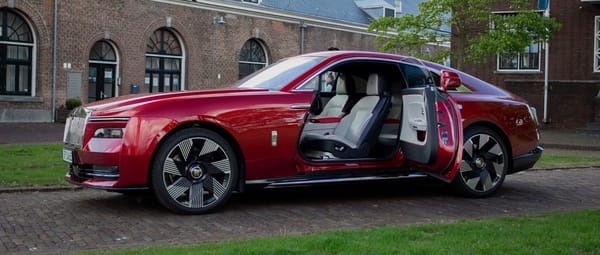Have we reached peak BEV with a combustion engine?
I'm getting confused. On the one hand we're being bombarded with all kinds of new battery technologies which promise to change electric cars forever. On the other hand we're back to bolting combustion engines to BEV's again. What the hell is going on?
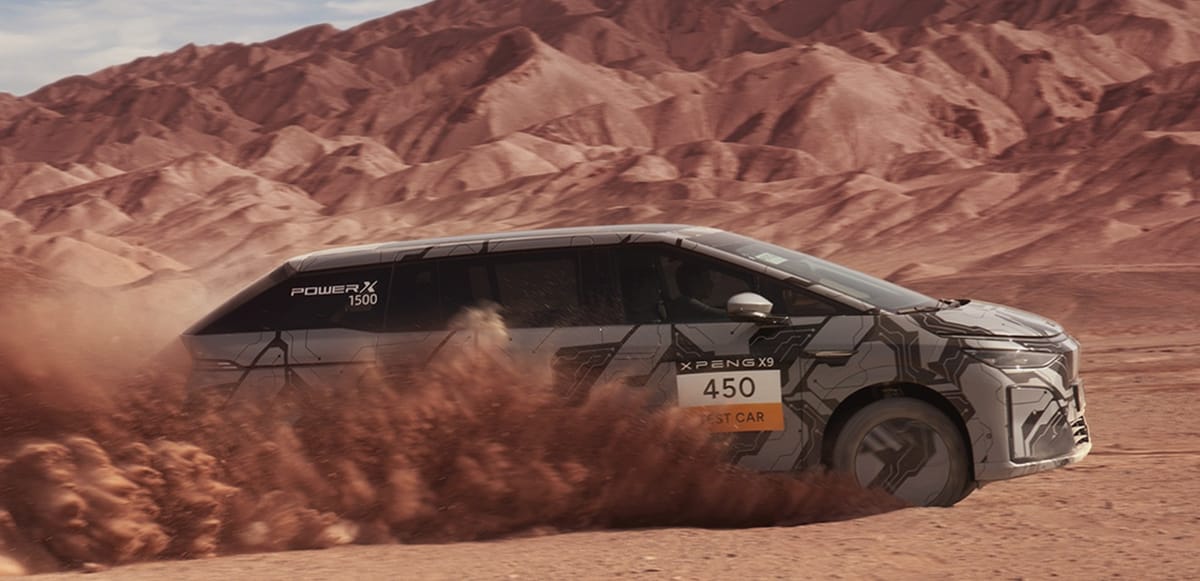
I'm getting confused. On the one hand we're being bombarded with all kinds of new battery technologies which promise to change electric cars forever. On the other hand we're back to bolting combustion engines to BEV's again. What the hell is going on?
Today Xpeng and Mercedes showed their separate views on the future of mobility. Mercedes took it upon themselves to fit a BEV with new and shapeshifting solid state batteries to drive from Stuttgart to Malmö on a single charge. A trip of a bit more than 1.200 km. Impressive, but also flawed and completely unusable right now. I'll get back to this later, because I really want to dig into what Xpeng showed off first.
The Chinese car brand which up until now only produced BEV's, introduced the Xpeng X9 EREV. A plug-in hybrid with a fully electric range of around 450 km and a three cilinder 1.5-liter engine that isn't hooked up to any wheels, but has the sole purpose of charging the batteries. That, dear reader, is the reason there is 'EREV' in the name, and not 'PHEV'. It's a plug in, but not a hybrid. It's an 'electric range extended vehicle'.
Driving around with your own energy plant feels like going back in time. There once was a time where charging was really, and I do mean really hard to do. In those times the Karma Fisker and the BMW i3 REx were the proposed solution. But it very quickly turned out people didn't really want to drive around with an EV and a combustion engine.
Just like the Long Range PHEV, I don't really see the use for these kinds of EREV-cars. The petrol engine will probably only be used once every year, but will still need its regular maintenance. Also gasoline expires, so the tank will need emptying and cleaning if the owner doesn't use the enige. Charging the car on the regular with the engine doesn't make sense, when it's not absolutely needed, because it's the most expensive and inefficient way to charge.
In other words: buyers of these EREV's will think they're getting the best of both worlds, but in reality they're getting an even worse deal than a Long Range PHEV. All because they fear getting range anxiety in a BEV with more useable range.
But that's not the point. At least not of the car manufacturers. It's a way to optimize for most subsidies while at the same time evading some tariffs and environmental taxes. For now, it's the best of all worlds when it comes to pricing. And that makes the EREV an attractive buy in this moment.
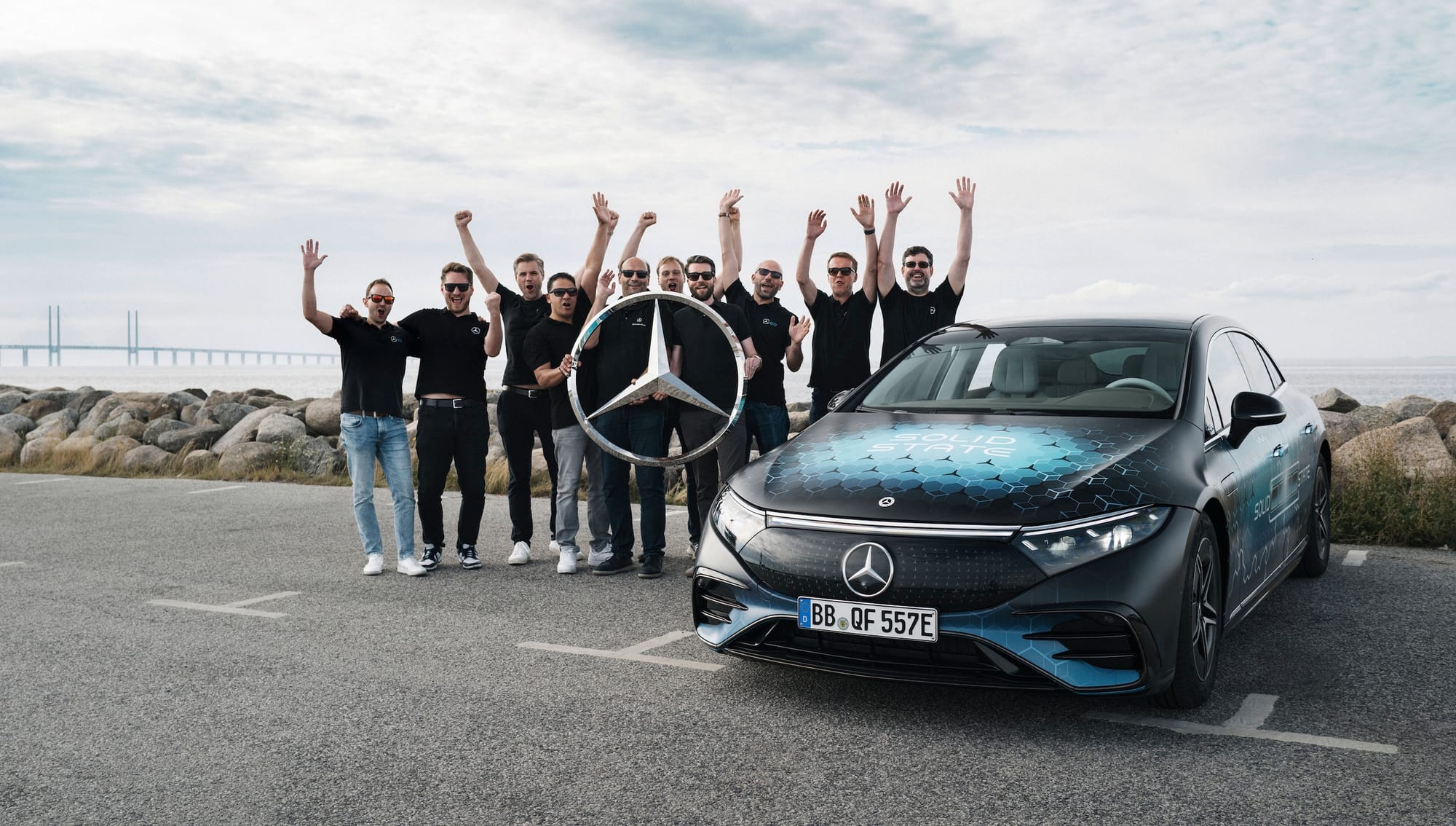
That Mercedes with a solid state battery is very much the opposite. It's an attempt to proof that solid state makes sense in a BEV, which we already know it does, on paper. Mercedes hasn't actually changed that with the impressive road trip on one charge. It just confirmed what we already know: Mercedes has proven that solid state provides ample range, but that it's not ready for production by any stretch of the imagination.
Let's start with one strange piece of data missing from the press release: the Germans forgot to say how large (in physical size and in kWh) the solid state battery in the car is, or how much it weighs. We can presume that it fits in the same area of the 118 kWh battery that originally was fitted to the used EQS. But for all we know Mercedes stacked the back seat and boot full of batteries to make it to Malmö.
What we do know is that one of the biggest issues with solid state batteries hasn't been fixed: the fact they change volume when they charge or discharge. Solid state batteries literally are bigger when they're fully charged than when they're empty. That means battery packs will be able to rattle around in the car when it gets low on charge and if the cells aren't fastened properly. Mercedes thought the best way to fix this issue would be to install pneumatic actuators. In other words: a lot of moving parts that squish cells in place. What could go wrong?
I don't know what the future of BEV's will be, but I'm guessing lugging around a petrol engine isn't one of them. Making a battery pack more complicated and potentially more faulty while getting more expensive at the same time, probably also isn't the way to go. Maybe improving charging infrastructure and proving that BEV's aren't scary at all and work really well for 98 percent of regular uses. The other two percent maybe takes a bit more planning than it used to.
In other news:
Lucid interim CEO Marc Winteroff has confirmed we can expect the new and smaller promised EV from the company somewhere next year. It's supposed to go into production at the end of 2026. Nothing really new there. What is new, is the fact that the successor of the smaller EV is already known: a new smaller SUV. Let's hope the Gravity will be a big enough success that the smaller Gravity makes it into reality and that Merceds-Benz won't beat them to market with the Baby G-Class.
There is a saying in Dutch that goes like this "wij van WC-eend, raden WC-eend aan". Translated it means 'we from the company Toilet-duck, recommend Toilet-duck." I'm guessing Volvo CEO Håkan Samuelsson has taken that saying to heart on one of his many visits to The Netherlands, because he pretty much said the same thing recently. The man is claiming that the car industry is facing a new world order in which the old world brands will recede their power to two or three mighty Chinese brands. You can probably guess that Geely, the concern of which Volvo is a part, is on of those big three. Samuelsson has probably also heard of the saying; "don't bite the hand that feeds you."
The Polestar 5 will be helping to make Samuelsson's vision a reality. It looks really good.



